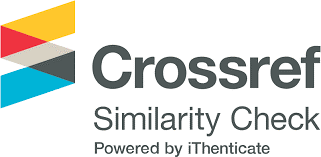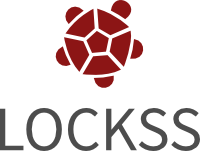Design and Autonomy Evaluation of a Power Supply for Long Range IoT Devices Using Magnetic Field Harvested Energy from High Current
DOI:
https://doi.org/10.18618/REP.e202429Keywords:
IoT, Harvested Energy, Supercapacitor, Electronic Circuits, Magnetic Field, Performance Evaluation, AutonomyAbstract
This study introduces a circuit designed to enhance energy conversion and storage, facilitating autonomous and sustainable operation from harvested magnetic energy in IoT devices. Through comprehensive experimentation and analysis, the circuit’s performance and reliability were assessed, showcasing its potential to provide a dependable power supply to IoT networks. Furthermore, various scenarios with different operation cycles and component combinations were simulated to validate the circuit’s potential. The findings indicate that integrating strategies such as energy redundancy using supercapacitors and magnetic field energy harvesting can be effective without the need for batteries or optimization circuits. The autonomy tests and predictions indicate that the system can go several days even without the total interruption on the energy source.
Downloads
References
S. Sinha, “State of IoT 2021: Number of connected IoT devices growing 9% to 12.3 billion globally, cellular IoT now surpassing 2 billion”, IoT Analytics: Market Insights for the Internet of Things, 2021.
A. Ostadi, M. Kazerani, “A comparative analysis of optimal sizing of battery-only, ultracapacitor-only, and battery–ultracapacitor hybrid energy storage systems for a city bus”, IEEE Transactions on Vehicular Technology, vol. 64, no. 10, pp. 4449–4460, 2014. DOI: https://doi.org/10.1109/TVT.2014.2371912
M. Khalid, “A review on the selected applications of battery- supercapacitor hybrid energy storage systems for microgrids”, Ener- gies, vol. 12, no. 23, p. 4559, 2019. DOI: https://doi.org/10.3390/en12234559
J. M. Gilbert, F. Balouchi, “Comparison of energy harvesting systems for wireless sensor networks”, International Journal of automation and computing, vol. 5, no. 4, pp. 334–347, 2008. DOI: https://doi.org/10.1007/s11633-008-0334-2
A. Michalski, Z. Watral, “Problems of powering end devices in wireless networks of the internet of things”, Energies, vol. 14, no. 9, may 2021. DOI: https://doi.org/10.3390/en14092417
T. Sanislav, S. Zeadally, G. D. Mois, S. C. Folea, “Wireless energy harvesting: Empirical results and practical considerations for Internet of Things”, Journal of Network and Computer Applications, vol. 121, pp. 149–158, nov 2018. DOI: https://doi.org/10.1016/j.jnca.2018.08.002
O. Cetinkaya, O. B. Akan, “Electric-field energy harvesting in wireless networks”, IEEE Wireless communications, vol. 24, no. 2, pp. 34–41, 2017. DOI: https://doi.org/10.1109/MWC.2017.1600215
D. Monagle, E. Ponce, S. B. Leeb, “Generalized Analysis Method for Magnetic Energy Harvesters”, IEEE Transactions on Power Electron- ics, vol. 37, no. 12, pp. 15764–15773, 2022. DOI: https://doi.org/10.1109/TPEL.2022.3195149
F. Yang, L. Du, H. Yu, P. Huang, “Magnetic and electric energy harvesting technologies in power grids: A review”, Sensors, vol. 20, no. 5, p. 1496, 2020. DOI: https://doi.org/10.3390/s20051496
O. B. Akan, O. Cetinkaya, C. Koca, M. Ozger, “Internet of Hybrid Energy Harvesting Things”, IEEE Internet of Things Journal, vol. 5, no. 2, pp. 736–746, apr 2018. DOI: https://doi.org/10.1109/JIOT.2017.2742663
R. D. S. Ferraz, S. G. Oliveira, H. Tertuliano Filho, C. B. Da Silva, “Power Supply Design for IoT Devices Using Magnetic Field Har- vested Energy”, in 2023 IEEE 8th Southern Power Electronics Con- ference (SPEC), pp. 1–7, IEEE, 2023. DOI: https://doi.org/10.1109/SPEC56436.2023.10408109
K.-S. Chang, S.-M. Kang, K.-J. Park, S.-H. Shin, H.-S. Kim, H.-S. Kim, “Electric field energy harvesting powered wireless sensors for smart grid”, Journal of Electrical Engineering and Technology, vol. 7, no. 1, pp. 75–80, 2012. DOI: https://doi.org/10.5370/JEET.2012.7.1.75
R. d. S. Ferraz, Dispositivo IoT de baixo consumo e longo alcance alimentado por energia coletada de campos magne´ticos provenientes de condutores carregados, Ph.D. thesis, UFPR - Universidade Federal do Parana´, 2023.
K. K. Kar, Handbook of nanocomposite supercapacitor materials II, vol. 302, Springer, 2020. DOI: https://doi.org/10.1007/978-3-030-52359-6
M. Jayaraj, A. Antony, P. Subha, Energy Harvesting and Storage: Fundamentals and Materials, Springer Nature, 2022. DOI: https://doi.org/10.1007/978-981-19-4526-7
M. Kabakulak, S. Arslan, “Design and Application of an Electromag- netic Energy Harvester for Wireless Sensor Network”, in 2020 International Conference on Electrical, Communication, and Computer Engineering (ICECCE), pp. 1–6, IEEE, 2020. DOI: https://doi.org/10.1109/ICECCE49384.2020.9179409
S. Yuan, Y. Huang, J. Zhou, Q. Xu, C. Song, G. Yuan, “A high- efficiency helical core for magnetic field energy harvesting”, IEEE Transactions on Power Electronics, vol. 32, no. 7, pp. 5365–5376, 2016. DOI: https://doi.org/10.1109/TPEL.2016.2610323
S. D. Vivenza, M. F. Gomes, “Energia, gerac¸a˜o distribu´ıda e o princ´ıpio da seguranc¸a jur´ıdica”, Research, Society and Development, vol. 11, no. 1, pp. e2111123417–e2111123417, 2022. DOI: https://doi.org/10.33448/rsd-v11i1.23417
O. A. Saraereh, A. Alsaraira, I. Khan, B. J. Choi, “A hybrid energy harvesting design for on-body internet-of-things (IoT) networks”, Sen- sors (Switzerland), vol. 20, no. 2, jan 2020. DOI: https://doi.org/10.3390/s20020407
S. Kawar, S. Krishnan, K. Abugharbieh, “Power Management for Energy Harvesting in IoT - A Brief Review of Require- ments and Innovations”, in Midwest Symposium on Circuits and Systems, vol. 2021-Augus, pp. 360–364, IEEE, aug 2021. DOI: https://doi.org/10.1109/MWSCAS47672.2021.9531846
S. Maniktala, Switching power supply design & optimization, McGraw-Hill Education, 2014.
D. Vinko, “Power management circuit for energy harvesting appli- cations with zero-power charging phase”, in 2017 40th International Convention on Information and Communication Technology, Electron- ics and Microelectronics (MIPRO), pp. 158–161, IEEE, 2017. DOI: https://doi.org/10.23919/MIPRO.2017.7973409
H. Gruber, “The evolution of market structure in semiconductors: the role of product standards”, Research Policy, vol. 29, no. 6, pp. 725– 740, 2000. DOI: https://doi.org/10.1016/S0048-7333(99)00046-3
J. M. Paredes-Parra, A. J. Garc´ıa-Sa´nchez, A. Mateo-Aroca, A´ . Molina-Garc´ıa, “An alternative internet-of-things solution based on LOra for PV power plants: Data monitoring and management”, Energies, vol. 12, no. 5, 2019. DOI: https://doi.org/10.3390/en12050881
J. Twomey, Applied Embedded Electronics, ” O’Reilly Media, Inc.”, 2023.
A. H. Khawaja, Q. Huang, Z. H. Khan, “Monitoring of overhead transmission lines: a review from the perspective of contactless tech- nologies”, Sensing and imaging, vol. 18, pp. 1–18, 2017. DOI: https://doi.org/10.1007/s11220-017-0172-9
S. A. S. R. S. K. P. M. S. S. Abhinay Vijayrao Sahare, Shreyas Sunil Patil, “Transmission Line Fault Monitoring System Using IoT”, International Journal of Novel Research and Development (IJNRD), vol. 8, p. 5, 2023.
J. Kowal, E. Avaroglu, F. Chamekh, A. Sˇenfelds, T. Thien, D. Wijaya, D. U. Sauer, “Detailed analysis of the self-discharge of superca- pacitors”, Journal of Power Sources, vol. 196, no. 1, pp. 573–579, 2011, URL: https: //www.sciencedirect.com/science/article/pii/S0378775309022897. DOI: https://doi.org/10.1016/j.jpowsour.2009.12.028
D. U. Sauer, D. U. S. Julia, K. Julia, K. Avaroglu, “Detailed Analysis of the Self Discharge of Supercapacitors”, Institute for Power Elec- tronics and Electrical Drives Slide, vol. 11, p. 13, 2008.
A. Pop-Vadean, P. P. Pop, T. Latinovic, C. Barz, C. Lung, “Harvesting energy an sustainable power source, replace batteries for powering WSN and devices on the IoT”, in IOP Conference Series: Materials Science and Engineering, vol. 200, Institute of Physics Publishing, may 2017. DOI: https://doi.org/10.1088/1757-899X/200/1/012043
Downloads
Published
How to Cite
Issue
Section
License
Copyright (c) 2024 Rafael da Silva Ferraz, Sóstenes Gutembergue M Oliveira, Horacio Tertuliano dos S. Filho, Cláudio Bastos da Silva

This work is licensed under a Creative Commons Attribution 4.0 International License.















